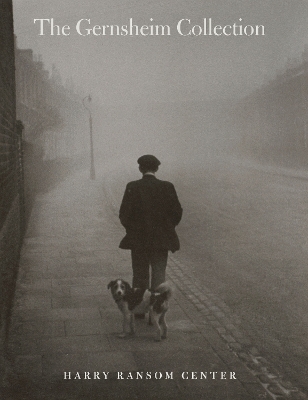Harry Ransom Center Photography
2 total works
A driven perfectionist with inexhaustible curiosity about people, Arnold Newman was one of the twentieth century’s greatest and most prolific photographers. In a career that spanned nearly seven decades and produced many iconic works, Newman became renowned for making “pictures of people” (he objected to the term “portraits”) in the places where they worked and lived—the spaces that were most expressive of their inner lives. Refusing the label of “art photographer,” Newman also accepted magazine and advertising commissions and executed them to the same exacting standards that characterized all of his work. He spent countless hours training aspiring photographers, sharing his own vast experience, but allowing them the freedom to experiment and discover.
Rich with materials from Newman’s extensive archive in the Harry Ransom Center at the University of Texas at Austin, Arnold Newman offers unprecedented, firsthand insights into the evolution of the photographer’s creativity. Reproduced here are not only many of Newman’s signature images, but also contact sheets, Polaroids, and work prints with his handwritten notes, which allow us to see the process by which he produced the images. Pages from his copious notebooks and calendars reveal Newman’s meticulous preparation and exhausting schedule. Adsheets and magazine covers from Holiday, LIFE, Newsweek, Look, Esquire, Seventeen, Time, and Sports Illustrated show the range of Newman’s largely unknown editorial work. Roy Flukinger provides a contextual overview of the archive, and Marianne Fulton’s introduction highlights the essential moments in the development of Newman’s life and work.
Alfred H. Barr Jr. Award, College Art Association, 2012
The Gernsheim Collection is one of the most important collections of photography in the world. Amassed by the renowned husband-and-wife team of Helmut and Alison Gernsheim between 1945 and 1963, it contains an unparalleled range of images, beginning with the world's earliest-known photograph from nature, made by Joseph Nicéphore Niépce in 1826. The Gernsheim Collection includes some 35,000 major and representative photographs from the nineteenth and twentieth centuries; a research library of some 3,600 books, journals, and published articles; about 250 autographed letters and manuscripts; and more than 200 pieces of early photographic equipment. Its encyclopedic scope—as well as the expertise and taste with which the Gernsheims built the collection—makes the Gernsheim Collection one of the world's premier resources for the study and appreciation of the development of photography.
Published to coincide with a landmark exhibition staged by the Harry Ransom Center at the University of Texas at Austin, which owns the collection, this volume presents masterpieces of the Gernsheim Collection, along with lesser-known images of great historical significance. Arranged in chronological order, this selection effectively constitutes a visual history of photography from its beginnings to the mid-twentieth century. Each full-page image is accompanied by an extensive annotation in which Roy Flukinger describes the photograph's place in the evolution of photography and also within the Gernsheim Collection. Flukinger also provides an enlightening introduction in which he traces the Gernsheims' passionate careers as collectors and pioneering historians of photography, showing how their untiring efforts significantly contributed to the acceptance of photography as a fine art and as a field worthy of intellectual inquiry. Appreciations of the Gernsheim Collection by Alison Nordström and Mark Haworth-Booth confirm its singular importance as a collection of outstanding breadth and depth in the history of photography.

